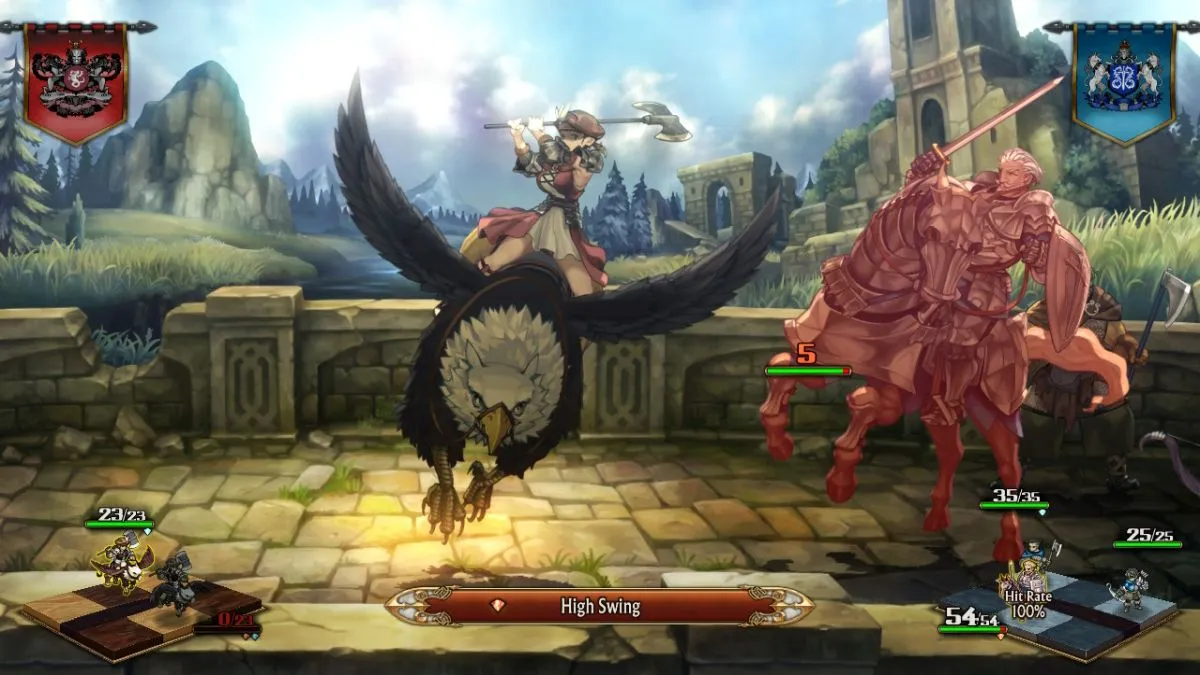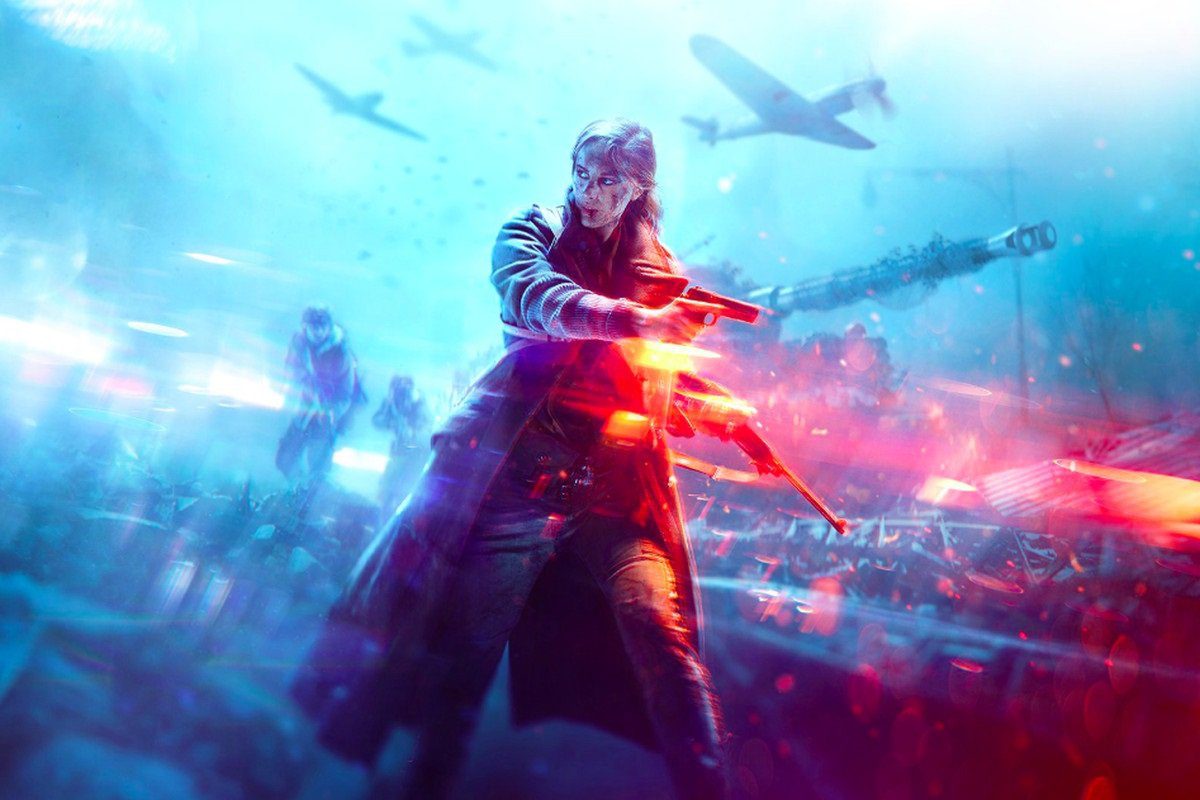When I bring up the “tactics RPG,” it feels like there is a certain image that comes to mind: grid-based, turn-based, isometric, or top-down, with units hopping up and down terrain to bonk each other on the head with swords and magic. The sheer popularity of games like Final Fantasy Tactics, Tactics Ogre, and Fire Emblem have cemented as much.
Maybe this is my own biases speaking, but hearing “(insert name here) Tactics” immediately brings that image to mind, and it’s held true for several variations of tactical spin-offs. After playing the demo for Unicorn Overlord, Vanillaware’s latest, it is clearly falling in the strategy side of the genre; rather than another Tactics, it’s hearkening back to a different branch of the Ogre series: Ogre Battle.
It’s a really interesting approach to see Vanillaware take. While Ogre Battle had a huge impact on the industry, Tactics Ogre and FFT felt like they eclipsed it. But in seeing this team tackle those ideas, systems, and even the framing of the story, Unicorn Overlord feels like a spiritual successor, years later.

Life in real-time
To start, Unicorn Overlord is a strategy RPG. In the demo—out now on Switch, PlayStation 4 and 5, and Xbox Series X|S—the game basically starts at the beginning, giving you a brief prologue and a few tutorials before dumping you out into the main continent of Cornia.
You are Prince Alain, the heir to the throne of Cornia, living in exile after a former general broke ranks and overthrew your mother, establishing the Zenoiran empire. Years later, the entire world has slowly fallen to Zenoira. Alain, his trusty advisor Josef, and a slew of friends and companions now make up the Liberation Army, seeking to wrest Cornia back for its rightful ruler.
Already, we’re into some fairly standard ideas. And if I have anything to nitpick about the demo, it’s that the main plot is what you’d expect: knights and warriors fighting to regain control from the evil, mind-controlling empire.

The appeal of the early areas are in their open approach. After a friend is taken hostage, Josef warns Alain that the Liberation force is not up to the task of a rescue just yet. Instead, he should venture around the continent, establishing a foothold and recruiting allies, eventually building a force strong enough to forge ahead.
So you run around the world in real-time. All around Alain, NPCs wander around, waiting to gossip or provide helpful tips; different resource nodes provide lumber or ore, to turn in for reconstruction efforts in war-torn towns you’ve liberated; and even some treasure waits to be discovered, deep in ruins or graveyards.
There’s a sense of place here that already sets it apart from other games. While I miss the intricate, detailed battle maps of a tactics game, what I get in its place is the feeling of a persistent world and campaign. When I wander into enemy territory, I have to be wary of patrols. Eventually, I can start a battle stage, shuffling me into a mode where I can deploy my forces and charge forth. When this happens, enemies throw up barricades, man towers, and hole up in garrisons dotting the path between my base and the objective.

It’s really impressive to see the ways that Vanillaware plays with terrain and locale, in these situations. A swampy land has an eerie mood to it, yes, but also makes for an interesting strategic puzzle to solve when I have to actually direct troops across it. I loved the enclosed, walled city of Barbatimo, which sat at a crucial crossroads for my campaign. It looked like what I would imagine a critical juncture point would in Unicorn Overlord’s world. Laying siege to it was as tricky as I would’ve hoped.
Automatic battles
Combat in Unicorn Overlord is, essentially, an auto-battling affair. When units of opposing forces meet on the field, they go into conflict, backed up by any nearby ranged or magical units. And by unit, I mean a squad: moving bodies on the board of Unicorn Overlord are actually multiple different soldiers, comprising a single “unit.” So if my knight is leading a band alongside a healer, housecarl, and archer, that’s who goes into battle.
Then, the two forces clash in an automated battle, where the logic of your own Final Fantasy XII Gambit-system tactics goes toe-to-toe with the enemies’. Units spend their active and passive point allotment as you’ve told them to, and whoever wins advances forward.

It works really, really well. While having a lack of control in battle might feel a bit concerning, the amount of influence you exert beforehand is massive. Actions can be given conditions, like “use this attack, if there’s a flying enemy on the field,” or “activate this if someone drops below X health threshold.” It activates the strategy part of my brain, rather than the immediate act-and-react of tactics.
A lot of Unicorn Overlord is thinking ahead, in terms of moves, time, actions, and strategies. In one fight, I had to ensure my units had a good spread of magic damage, to deal with all the heavy armor on the other side of the field. In another, I needed to roll out a unit with a leader who could break down barricades first, to clear the way for my cavalry.
Constantly, I faced choices based on what the enemy was doing, how much time was left, and what state my units were in. Individual unit stamina can drop fast, and an overworked unit can leave itself open to an enemy strike, so I even had to take that into account.
Back to the past
With all this in mind, I was already fascinated. And after doing some research, I wanted to see how much Unicorn Overlord pulled from the past. So, I went and booted up Ogre Battle: March of the Black Queen. It’s kind of amazing to put the two side-by-side; it makes it quite evident where Vanillaware drew inspiration from, for its real-time overworld strategy.


That’s not to say it’s all Ogre, though. Pieces of Unicorn Overlord also dredged up other tactics giants; the stats and level-up screen, as well as using the “Talk” function on the battlefield, all reminded me of Fire Emblem. And the aforementioned logic-tactics add their own spin to things. Its persistent overworld gives me flashes of Heroes of Might and Magic at times.
So yes, Unicorn Overlord feels like Vanillaware rekindling an old Ogre Battle flame that’s been dormant for quite some time. The last new entry was over two decades ago, after all. But my combining and wearing its influences on its sleeve like this, Unicorn Overlord still feels fresh and exciting, especially for those like me who missed this era back when it first happened.
It’s nice to feel like pillars of this genre are getting renewed interest, and with that Vanillaware touch of art and music, too—both of which are excellent, by the way. The fairly lengthy demo gives a pretty good look at what’s ahead, and now I’m more curious than ever to see whether Unicorn Overlord can stick the landing.













Published: Feb 26, 2024 9:20 PM UTC